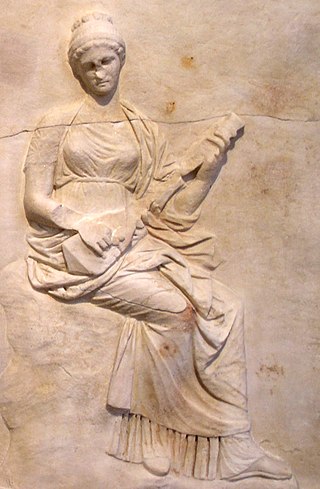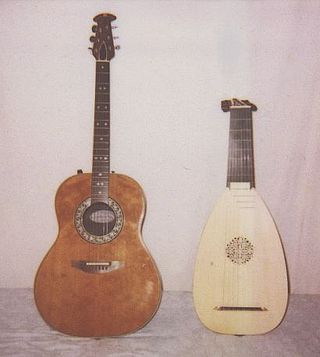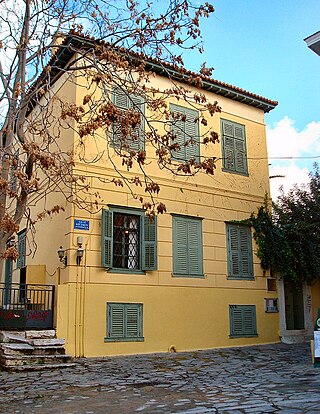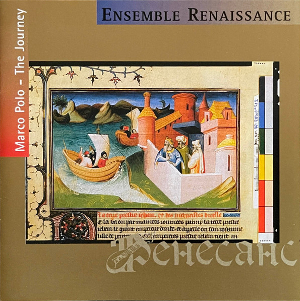
The bouzouki is a musical instrument popular in Greece. It is a member of the long-necked lute family, with a round body with a flat top and a long neck with a fretted fingerboard. It has steel strings and is played with a plectrum producing a sharp metallic sound, reminiscent of a mandolin but pitched lower. There are two main types of bouzouki: the trichordo (three-course) has three pairs of strings and the tetrachordo (four-course) has four pairs of strings. The instrument was brought to Greece in the early 1900s by Greek refugees from Anatolia, and quickly became the central instrument to the rebetiko genre and its music branches. It is now an important element of modern Laïko pop Greek music.
The music of Greece is as diverse and celebrated as its history. Greek music separates into two parts: Greek traditional music and Byzantine music. These compositions have existed for millennia: they originated in the Byzantine period and Greek antiquity; there is a continuous development which appears in the language, the rhythm, the structure and the melody. Music is a significant aspect of Hellenic culture, both within Greece and in the diaspora.

The vast majority of the inhabitants of the United States are immigrants or descendants of immigrants. This article will focus on the music of these communities and discuss its roots in countries across Africa, Europe and Asia, excluding only Native American music, indigenous and immigrant Latinos, Puerto Rican music, Hawaiian music and African American music. The music of Irish- and Scottish-Americans will be a special focus, due to their extreme influence on Appalachian folk music and other genres. These sorts of music are often sustained and promoted by a variety of ethnic organizations.

The Mildenhall Treasure is a large hoard of 34 masterpieces of Roman silver tableware from the fourth century AD, and by far the most valuable Roman objects artistically and by weight of bullion in Britain. It was found at West Row, near Mildenhall, Suffolk, in 1942. It consists of over thirty items and includes the Great Dish which weighs over 8 kg (18 lb).

Rebetiko, plural rebetika, occasionally transliterated as rembetiko or rebetico, is a term used today to designate originally disparate kinds of urban Greek music which in the 1930s went through a process of musical syncretism and developed into a more distinctive musical genre. Rebetiko briefly can be described as the urban popular song of the Greeks, especially the poorest, from the late 19th century to the 1950s, and served as the basis for further developments in popular Greek music. The music, which was partly forgotten, was rediscoved during the so-called rebetika revival, which started in the 1960s and developed further from the early 1970s onwards.
The music of Crete, also called kritika, refers to traditional forms of Greek folk music prevalent on the island of Crete in Greece. Cretan traditional music includes instrumental music, a capella songs known as the rizitika, "Erotokritos," Cretan urban songs (tabachaniotika), as well as other miscellaneous songs and folk genres.

The pandura or pandore, an ancient string instrument, belonged in the broad class of the lute and guitar instruments. Akkadians played similar instruments from the 3rd millennium BC. Ancient Greek artwork depicts such lutes from the 3rd or 4th century BC onward.
Greek traditional music includes a variety of Greek styles played by ethnic Greeks in Greece, Cyprus, Australia, the United States and other parts of Europe. Apart from the common music found generally in Greece, each region of Greece contains a distinct type of folk music that originated from the region due to their history, traditions and cultural influences.

Music was almost universally present in ancient Greek society, from marriages, funerals, and religious ceremonies to theatre, folk music, and the ballad-like reciting of epic poetry. This played an integral role in the lives of ancient Greeks. There are some fragments of actual Greek musical notation, many literary references, depictions on ceramics and relevant archaeological remains, such that some things can be known—or reasonably surmised—about what the music sounded like, the general role of music in society, the economics of music, the importance of a professional caste of musicians, etc.

Plucked string instruments are a subcategory of string instruments that are played by plucking the strings. Plucking is a way of pulling and releasing the string in such a way as to give it an impulse that causes the string to vibrate. Plucking can be done with either a finger or a plectrum.

Byzantine dance developed during the periods of Late Antiquity and the Middle Ages, was centered in the capital city of Byzantium, later renamed Constantinople. Byzantine culture was oriented towards Greek culture and Christianity, rather than Roman paganism, in development of the arts. The Byzantine Empire existed for more than a thousand years, from the 4th century AD to 1453.
It forms part of the broader musical tradition of mainland and of the southern Balkans. Compared to other regions of, the music of Macedonia is characterized by a high degree of diversity, due to the numerous influences it has received over the years from neighboring countries and particularly from refugees arriving in the early 20th century. In general terms, Macedonian music can be thought of as the connecting chain between the Western musical tradition of Epirus and Thessaly and the Eastern musical tradition of Thrace and Constantinople.

The Museum of Greek Folk Musical Instruments, is a museum and Research Centre for Ethnomusicology in the Lassanis Mansion, Plaka, Athens, Greece. It displays about 600 Greek musical instruments from the last 300 years and has as many more in store.

The Cretan lyra is a Greek pear-shaped, three-stringed bowed musical instrument, central to the traditional music of Crete and other islands in the Dodecanese and the Aegean Archipelago, in Greece. The Cretan lyra is considered to be the most popular surviving form of the medieval Byzantine lyra, an ancestor of most European bowed instruments.

The laouto is a long-neck fretted instrument of the lute family, found in Greece and Cyprus, and similar in appearance to the oud. It has four double-strings. It is played in most respects like the oud ; in Cyprus the laouto is plucked with a feather. This instrument is known in Albania as "llautë" or "llauta", and in Romania as "lăuta".

Giorgos Xylouris, also known as Psarogiorgis, is a Cretan laouto player and singer.

Marco Polo – The Journey is an album by Ensemble Renaissance, released in 1992 on the Artelier Music label in Germany. It is Renaissance's 11th album. The heme of the album is early music from the time of the travels of Marco Polo. It is one of the Renaissance's more eclectic works, covering not only the instrumental istanpittas of the Italian Trecento and earlier Franciscan laudas, but also Byzantine chant, girl songs from Cyprus preserved in the Manuscript 1203 kept in Iviron monastery, Persian and Arabic dances, traditional Music of Mongolia and Ancient Chinese ceremonial music. Marco Polo is one of the Ensemble's biggest successes, having spent a few weeks at the top of the classical music charts in Germany, in the 1993.

Music technology is the study or the use of any device, mechanism, machine or tool by a musician or composer to make or perform music; to compose, notate, playback or record songs or pieces; or to analyze or edit music.

Mechanical music technology is the use of any device, mechanism, machine or tool by a musician or composer to make or perform music; to compose, notate, play back or record songs or pieces; or to analyze or edit music. The earliest known applications of technology to music was prehistoric peoples' use of a tool to hand-drill holes in bones to make simple flutes. Ancient Egyptians developed stringed instruments, such as harps, lyres and lutes, which required making thin strings and some type of peg system for adjusting the pitch of the strings. Ancient Egyptians also used wind instruments such as double clarinets and percussion instruments such as cymbals. In Ancient Greece, instruments included the double-reed aulos and the lyre. Numerous instruments are referred to in the Bible, including the horn, pipe, lyre, harp, and bagpipe. During Biblical times, the cornet, flute, horn, organ, pipe, and trumpet were also used. During the Middle Ages, hand-written music notation was developed to write down the notes of religious Plainchant melodies; this notation enabled the Catholic church to disseminate the same chant melodies across its entire empire.



















